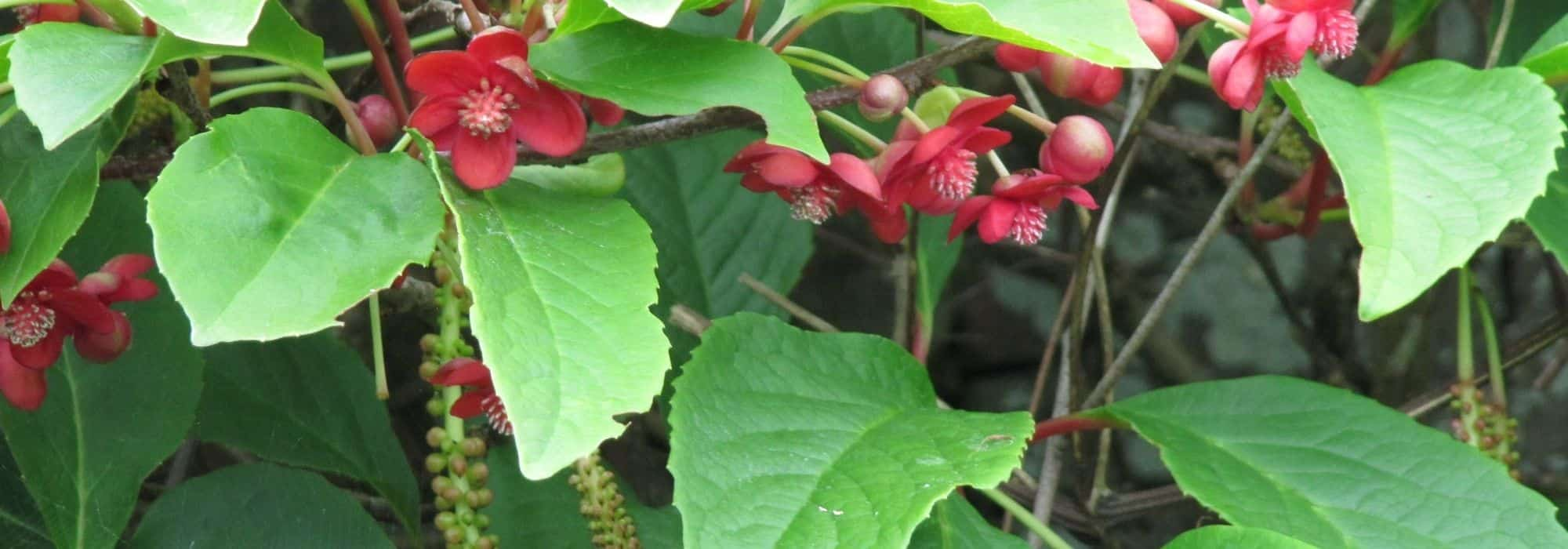
Growing Schisandra in pots
All our tips for planting, growing, and caring for schisandra or five-flavour berries in pots
Contents
Looking for a vigorous plant to adorn a wall? The Schisandra might be just the plant you need. Not familiar with it? That’s understandable, as this climbing plant, native to East Asia—from China to India, passing through Mongolia and Myanmar—is still relatively unknown in our latitudes. However, the Schisandra certainly deserves more recognition given its numerous benefits. Also known as climbing Magnolia, this voluble liana produces lovely fragrant flowers, either white or dark red, followed in autumn by edible berries known as “five-flavour berries,” renowned for their medicinal properties in traditional Chinese medicine. These berries, clustered together, display a beautiful red hue, making them highly ornamental. Hardy down to -20 °C, vigorous, and belonging to the Schisandraceae family, this deciduous plant—evergreen depending on the variety—particularly enjoys semi-shaded situations. As it can reach heights of 9 to 10 metres, it is perfect for covering a wall, pergola, or trellis. While it thrives in deep, rich, humus-bearing soil, it adapts very well to pot cultivation, provided its cultural needs are met. We’ll explain how to grow the Schisandra with five-flavour berries in a pot.

The Schisandra produces beautiful deep red or white fragrant flowers
Feel free to check out our full range of Schisandras.
What pot and substrate for Schisandra?
Originating from the north-eastern regions of Asia, schisandra can grow between 200 and 1700 metres in altitude in rich, deep, humus-bearing but well-drained soils. In its natural state, schisandra can be found by a stream, climbing up a tree. It displays remarkable vigour as it is not uncommon for this arborescent liana to climb up to 8 to 10 metres. To ensure your schisandra develops properly in a pot, it is essential to meet its soil and container requirements.
A deep and wide pot
The container should be at least 30 cm in diameter and sufficiently wide to accommodate supports that will guide it, when young, towards a trellis, pergola, or wall where you want it to cling.
The choice of pot is yours, but terracotta remains the best material for its breathability, thermoregulating properties, and natural porosity. Of course, to ensure good drainage, the pot must have a hole.
A rich and humus-bearing substrate
To thrive and develop fully, schisandra needs a rich, humus-bearing, cool, and well-drained soil. It particularly dislikes heavy, compact soils that retain too much moisture. You will need to provide a substrate made of garden soil, leaf compost, and sand to ensure drainage.
Don’t forget a layer of clay balls or gravel at the bottom of the pot.
Pot planting
- Soak the schisandra container in a bucket of water to moisten the root ball
- Place your clay balls or gravel at the bottom of the chosen container
- Fill part of the pot with the pre-mixed substrate
- Position the schisandra in the centre of the pot
- Top up with the remaining substrate, without compacting
- Water thoroughly
- Mulch the surface of the pot.
What location should you provide?
Schisandra thrives in partially shaded or sunny situations, but not excessively. A north, east, or west-facing position suits it well, and it will appreciate having its roots in the shade while its foliage basks in the sun. Therefore, on a balcony or terrace, schisandra enjoys morning sun and a little shade during the hottest hours of the day.
Hardy down to -20°C, schisandra adapts to all regions. However, it is important to place it in a location protected from cold winds and drafts, while still being sufficiently bright.
Planting in a pot in the south of France is not recommended. Schisandra is sensitive to drought. If you still wish to grow schisandra in the Mediterranean region, provide it with a north-facing position.
Discover other Schisandra
View all →Available in 1 sizes
Available in 1 sizes
Available in 1 sizes
Available in 1 sizes
The necessity of support for schisandra
Schisandra is a liana. And where there’s a liana, there’s a support! It needs to coil, twist, and extend its long, often purple-hued stems over wires or thicker supports. Thus, in its natural habitat, schisandra readily climbs up trees.
Ideally, your pot should be placed at the foot of a wall adorned with trellis or at the base of a pillar of a pergola, arch, or arbor. This way, it can provide shade to a small area or conceal an unsightly wall. It can also be perfect for hiding an unattractive tool shed by clinging to horizontally run wires.
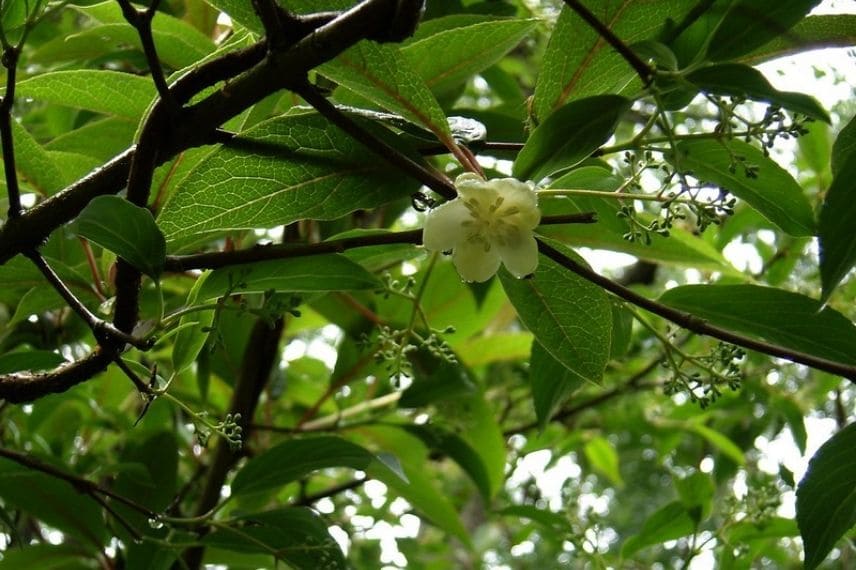
Schisandra wraps around a support thanks to its voluble brown-purple stems
However, be aware that schisandra’s growth is quite slow, so it will take some time to cover its support. Initially, the tender green shoots will need deeply driven stakes in the medium to guide them. Then, the stems become lignified, but ties are still recommended. Later, once schisandra is well established, you can remove the secondary shoots to form a trunk.
Read also
10 climbing plants ideal for fencesWhat care should be given to a schisandra grown in a pot?
Once established, schisandra requires some care to thrive properly.
Watering
Schisandra is particularly sensitive to drought, so waterings must be very regular, especially during the growing season from April to the end of October. The substrate should remain cool, even moist. To ensure this freshness, applying mulch is obligatory. Prefer an organic mulch that will nourish the soil.
Fertilising
Schisandra loves rich and fertile soils. Regular application of well-decomposed compost will nourish the soil while improving the structure of the substrate to facilitate the penetration of watering. This will also enhance fruiting.
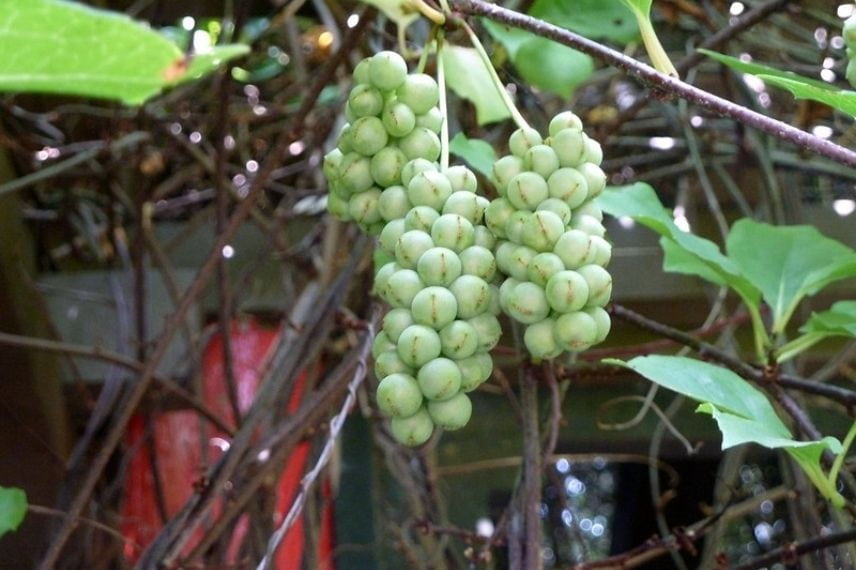
To fruit, schisandra needs rich and fertile soil and plenty of light
Pruning
Pruning is unnecessary for schisandra. You can simply cut a few secondary tillers to encourage the regeneration of the plant.
Repotting
This should be done as soon as the plant appears to be exhausted, approximately every 3 years. It is best to do this at the beginning of spring and take the opportunity to provide a rich potting mix.
Which varieties for pot growing?
Before choosing the most suitable variety of schisandra, be aware that this plant is self-sterile and dioecious. This means that only female plants, pollinated by male plants, can bear fruit. If you want to obtain berries, you will need to plant two schisandra plants of each sex, unless you opt for a new self-fertile selection, the schisandra chinensis Sadova N°1.
Our favourite for pot planting
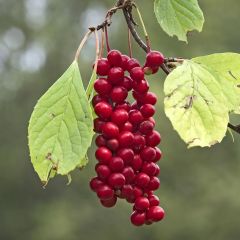
Schisandra chinensis Sadova N°1
- Flowering time July, August
- Height at maturity 7 m
To choose for its ornamental aspect
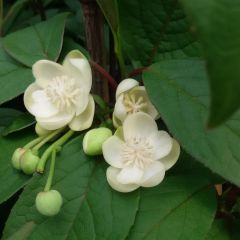
Schisandra grandiflora
- Flowering time June, July
- Height at maturity 6 m
- Subscribe!
- Contents



































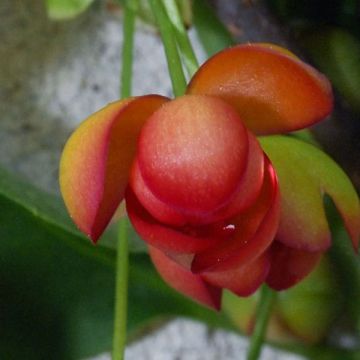
Comments